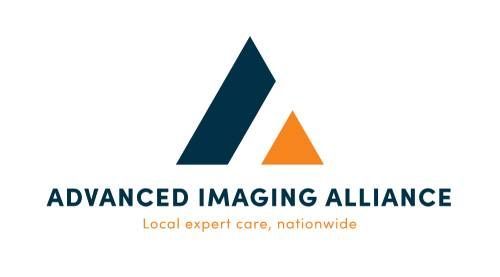The Role of Computed Tomography Angiography (CTA) in Diagnosing Cardiovascular Diseases
If a doctor suspects that a patient has a blood vessel problem, they may order Computed Tomography Angiography (CTA). This test is a special type of x-ray that uses computers to create images of blood vessels.
Computed Tomography Angiography (CTA) helps doctors check the health of a patient’s blood vessels. This state-of-the-art technology combines the use of a computer and the injection of a dye to create images of blood vessels and tissues. The computer in computed tomography (CT) assembles multiple X-ray images, or slices, to create 3-dimensional (3D) images. The dye is known as a contrast material because it highlights the blood vessels and tissues being studied in the images.
CTA is an Important Tool for Diagnosing Cardiovascular Diseases
Doctors use CTA to diagnose cardiovascular diseases and other conditions. Cardiovascular diseases affect the heart and blood vessels.
CTA helps doctors to find or evaluate:
- A blood vessel that is enlarged and which may be in danger of rupturing, is known as an aneurism
- A torn blood vessel
- Atherosclerosis, is a condition in which fatty material forms plaque that forms in the walls of arteries, thereby narrowing these blood vessels
- Blood vessel problems in your brain
- Blood clots that have formed in your leg and traveled to your lung
CTA is Especially Helpful in Diagnosing Cardiovascular Diseases
Cardiovascular disease, also known as heart disease, is the leading cause of death in the United States and around the world. In the year 2020, for example, cardiovascular disease (CVD) claimed the lives of 928,741 Americans.
Coronary heart disease was the leading cause of death from cardiovascular disease (41.2%). Coronary heart disease occurs when blood vessels cannot deliver enough oxygen-rich blood to the heart, and a CTA can help determine if plaque has narrowed these blood vessels.
Stroke was the second leading cause of CVD deaths (17.3%). Strokes happen when the blood supply to the brain is cut off, either because of a blockage in a blood vessel to the brain or by a burst blood vessel in the brain, both of which would be visible on a CTA.
How Does CTA Compare with Other Diagnostic Imaging Techniques?
Traditional angiogram
CTA is an advanced form of a traditional angiogram, also known as cardiac catheterization. In a traditional angiogram, the cardiac surgeon inserts a thin hollow tube (catheter) into an artery through the patient’s wrist or groin. The doctor then injects the contrast dye through the catheter and then uses an X-ray to image the arteries of the heart, also known as coronary arteries.
CTA is a non-invasive cardiac imaging technique, so it has a lower risk of complications compared with conventional angiography.
MRI
Both CT and MRI scans can create detailed images of internal organs, such as the heart and blood vessels. CT scans are faster than MRIs and are more widely available. MRIs do capture more detailed images compared with CT scans.
Benefits and Risks of CTA in Cardiovascular Disease Diagnosis
As with all medical procedures and diagnostic tools, CT angiography has its advantages and drawbacks. Its main benefits include:
- Non-invasive – CTA requires only an IV, so it reduces the risk of injury to blood vessels and other complications associated with traditional angiography
- Uses less contrast – CTA uses less contrast than cardiac catheterization, which reduces the risk of kidney damage
- Fast – doctors can perform a CTA in just a few seconds
- Accurate detection of plaque and other issues, which minimizes the risk of unnecessary procedures
Risks of CTA are usually associated with the contrast dye and may include:
- Itching
- Redness
- Hives
- Nausea
- Difficulty breathing
- Kidney failure
Radiation exposure from the CT scan can very slightly increase the risk of cancer, particularly for those who have had multiple scans over many years.
Limitations of CTA include:
- Small space – some very large patients may not fit comfortably in a CT scanner
- Some patients with a history of reactions to the contrast material may not be candidates for CTA
CTA Can Detect a Wide Variety of Cardiovascular Diseases
CT angiography can detect a wide variety of cardiovascular diseases, such as:
- Coronary artery disease
- Stroke
- Blood clots
- Blockages
- Birth-related (congenital) abnormalities of the heart and blood vessels
- Malformed blood vessels
- Injuries
- Tumors
What’s in the Future of CTA Technology in the Diagnosis of Cardiovascular Disease?
Medical technology is advancing quickly. Improvements in CT scanner hardware and post-processing software will help the machines create diagnostic images that are faster, safer, and more detailed than ever before. In addition to producing images that depict the structures of the heart and blood vessels, tomorrow’s advanced CTA technologies and non-invasive cardiac imaging techniques will provide doctors with even more information about the function of a patient’s cardiovascular system.
CTA is an Important Test
The information from CTA images may help doctors prevent a stroke or heart attack. It can also help them plan cancer treatment, get patients ready for other medical procedures, or rule out a cardiac problem.
For more information on digital imaging that Connecticut residents can rely on for optimal health, consult with Naugatuck Valley Radiological Associates (NVRA). We offer computed tomography angiography and other advanced imaging for the health and well-being of your family.


LOCATIONS
Prospect
166 Waterbury Road, Suite 105
Waterbury
1389 West Main Street, Tower 1, Suite 107
Southbury
385 Main Street, South Union Square, Building 2
© Naugatuck Valley Radiological Associates NVRA). All Rights Reserved.



